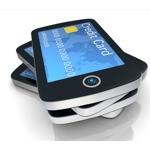
To understand the future of money and transactions, one must understand the nature of currency. Foremost, it is not real. A coin, a paper bill, a debit or credit card hold no value as objects. Currency has always been a form of data. Currency is the first digital revolution, started to turn it into what we now think of as traditional data. That has set us up for the second digital evolution of currency: where mobile technology and the cloud once again change how people make transactions.
Pew Tackles Mobile Money
Currency is the representation of data, passed between one entity to another for goods or services. Currency has undergone several evolutions in the thousands of years of civilization, and it mirrors the technological rise of the human race. It is not something that changes overnight. Yet, when it does start to change, the landscape of how transactions are made evolves right along with it. After all, an object in motion tends to stay in motion, gathering momentum as it goes along.
Where that object – currency – is going is a subject of debate. Questions abound: When will mobile technology take over transactions? What will the new system look like? Is this just some pipe dream of technologist and early-adopters?
The Pew Research Center’s Internet & American Life Project teamed with the Imagining the Internet Center at Elon University to tackle the idea of, “the future of money.” The result is a 35-page report based on a nonrandom, opt-in online sample of 1,012 Internet experts and other users. After following mobile payments for the last several years, this survey is one of the most comprehensive cross-sections of ideas and rational thoughts about the future of currency that we have seen. It includes researchers from corporations and universities, startups, venture capitalists, financial experts and more.
Pew’s previous surveys found that 21% of mobile phone owners had used mobile banking services. Of those users, 90% checked their balance and recent purchase activities. Of app users, 46% had purchased an app on a mobile device. Only 12% of mobile phone owners have made a payment with a mobile device.
That is likely to change; just not as soon as many entities in the mobile payments sector would like. Many experts that ReadWriteWeb has talked to during the past year have said that mobile payments is a market in infancy and that real, noticeable change of user behavior is between two and three years away. That is the time it will take to separate all of the options that are emerging for mobile payments and determine which dominant systems will emerge. Will it be Near Field Communications (NFC)? “Beam” technology that functions in much the same way as a barcode scanner, but in reverse (sending red laser information from the phone to a payment terminal), could be a possibility. QR codes are a more “mature” technology used for mobile payments but are likely a stopgap between now and what is to come.
Startups, like Boston-based Objective Logistics, see mobile technology coming to retailers and restaurants, “within the next five to seven years,” according to the company’s CEO Phil Beauregard.
That aligns with responses to Pew’s questions to Internet experts on what our wallets might look like by 2020.
Your Wallet in the Next Decade
Of Pew’s respondents, 65% agreed with this statement:
By 2020, most people will have embraced and fully adopted the use of smart-device swiping for purchases they make, nearly eliminating the need for cash or credit cards. People will come to trust and rely on personal hardware and software for handling monetary transactions over the Internet and in stores. Cash and credit cards will have mostly disappeared from many of the transactions that occur in advanced countries.
Pew readily admits that its results are heavily skewed towards technologist and Internet experts, so a margin of error cannot be quantified. Of course, a heavy percentage of these types of respondents will agree with the above statement. What is interesting is that 33% agreed with the below statement:
“People will not trust the use of near-field communications devices and there will not be major conversion of money to an all-digital, all-the-time format. By 2020, payments through the use of mobile devices will not have gained a lot of traction as a method for transactions. The security implications raise too many concerns among consumers about the safety of their money. And people are resistant to letting technology companies learn even more about their personal purchasing habits. Cash and credit cards will still be the dominant method of carrying out transactions in advanced countries.”
There are many reasons that consumers will or will not adopt mobile payments in the next 10 years. Currency, in its most basic form, will not go away. Yet the conversion of currency to true, transactional data, will continue. As Geoloqi CEO Amber Case said in the Pew report:
“When credit cards arrived, checks did not disappear, and neither did money. Although in some places either cash or cards are accepted, there are three main methods of payment. If another method of payment is added, we will likely have four methods of payment and retailers and businesses must accept another form of payment. Some systems may emerge that use completely smart payments, but there will still be other forms of payment available.”
This is Part One of a two-part series breaking down Pew’s findings. Next, we will look at the opportunities, challenges and concerns of Internet experts.
Images courtesy of Shutterstock.
Read more : What is the Future of Mobile Money? [Part 1]




0 Responses
Stay in touch with the conversation, subscribe to the RSS feed for comments on this post.